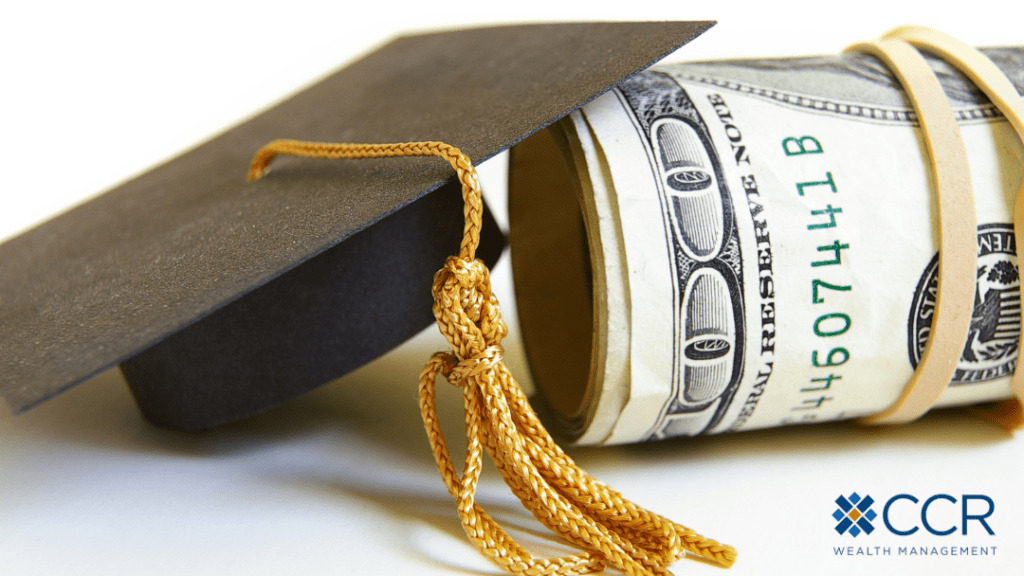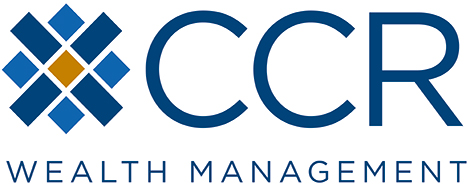Student Loans: What Can You Do with These Things?
Written by Danielle Drew, CFP®, CSLP®

The student loan landscape, especially in recent years, has been a popular topic filled with changes and challenges.
Navigating the options available for paying down the debt or reaching forgiveness can be confusing. This article will help you understand what type of loans are available, the repayment options available to minimize the overall expense, and pending changes to popular student loan programs.
The first step in deciding how to approach your student loans is to understand what you have. Let’s look at some common differentiators:
Federal vs. Private Loans
Federal student loans are issued by the US Dept of Education with interest rates controlled by Federal law, which are typically lower than private loans. These loans are issued to borrowers by completing a Free Application for Federal Student Aid (FAFSA) application to determine the household financial need. The major benefit to obtaining Federal student loans is that they are eligible for forgiveness and have several repayment programs. Some of these loans and programs also have advantages in how they apply interest charges.
For those looking for other options or who do not qualify for Federal student loans, borrowers can look to private student loans. Private student loans can vary in terms of interest rates, terms, and eligibility requirements which depend specifically on the lender. They are not eligible for any Federal student loan programs or benefits. Depending on the interest rate environment, federal student loans could be refinanced to a private student loan to reduce the interest rate and overall costs, however, it’s important to keep in mind what features you may be giving up for the reduced rate.
Subsidized vs. Unsubsidized
Subsidized loans are the preferential Federal Loans available to those with financial need as determined by the FAFSA application. Once issued, no interest accrues on these loans while the borrower is either in school at least ½ time or during the 6 month “Grace Period” after graduation. Interest will also not accrue during periods of deferment. Because of the interest treatment, these loans tend to be less expensive over time.
Unsubsidized loans are the next tier of Federal Loans available to cover the cost of education. These do not require a financial need, yet still require a FAFSA to be completed. Unsubsidized loans accrue interest immediately, even while in school and deferred. Unpaid, accumulated interest can then capitalize and be added to the balance of the loan, increasing the overall costs of the loan over time.
Standard Repayment Options
Once borrowers have graduated and repayment begins, the traditional repayment method is to amortize the loan so payments are made over 10 years. Unless you request otherwise, this will be the default repayment plan. There are other repayment plans that extend the repayment period up to 25 years, which will reduce the monthly payments, yet increase the overall cost over the life of the loan. There are also graduated repayment options which allow payments to increase over time as income likely increases. These options are intended to help make student loan payments more affordable yet are NOT considered an Income Driven Repayment (IRD) plan.
For those who are not struggling with cash flow, it’s often best to focus on paying education debt just as you would any other debt. Evaluating how your student loans fit into your overall cash flow, and personal balance sheet can help you assess which debt you should focus on paying first and how aggressive.
Options for Forgiveness
Most borrowers will need to pay back the balance of their loans, yet there are 3 ways Federal student loans can be forgiven.
1 - Discharged Loans
For a federal student loan to be discharged, one of 4 unfortunate events needs to take place: the school you are attending closes, loses accreditation, you become disabled, or death. While this does not occur often, it can be comforting knowing that in any of the unfortunate events listed, you, your loved ones, or your estate will not need to fulfill your Federal student loan obligation.
2 – Long Term Forgiveness
The second option is Long-term student loan forgiveness. This is available specifically for those enrolled in an Income Driven Repayment Plans (IDR Plan). If there is a balance remaining after the maximum term is reached under the IRD plan (typically 20-25 years), the balance will be forgiven. This would be most relevant and beneficial for borrowers with a high loan balance and relatively lower income level, leading to reduced, more affordable payments.
It’s important to consider that the amount forgiven may be considered taxable income for Federal and possibly for State income tax purposes. Depending on the loan balance, payment amounts, specific IDR plan, and whether interest has accrued, this can be a significant amount added to taxable income and often an unexpected expense of the Long-Term Forgiveness option.
The American Rescue Plan Act of 2021 modified the treatment of student loan forgiveness for discharges occurring in 2021 through 2025, to NOT be considered income for tax purposes. As the law stands now, after 2025, discharged debt from long term forgiveness will again be considered taxable income.
3 – Public Service Loan Forgiveness
The third way to have Federal student loans forgiven is through Public Service Loan Forgiveness (PSLF). To qualify, borrowers must be enrolled into an IDR plan, employed by a Qualifying employer (a non-profit, government organization (Federal, State, or local government or agency) or full-time for AmeriCorps) and make a total of 120 qualifying payments to be eligible to apply for forgiveness. This can be a great benefit for those who choose to work in the public sector as they typically have lower earnings compared to professionals in the private sector.
Another major benefit to the program is that per the IRS, student loan balances forgiven under PSLF are NOT considered income for Federal tax purposes, so there are no additional income tax expenses when the loans are forgiven.
Income-Driven Repayment Options
For those who struggle to afford their student loan payments and looking to potentially lower their payment or are potential candidates for Public Service loan Forgiveness, there are Income Driven Repayment (IDR) Plans. These include:
- SAVE (Saving on a Valuable Education)
- Formerly REPAYE (Revised Pay as you Earn)
- PAYE (Pay as you Earn),
- IBR (Income Based Repayment)
- ICR (income contingent plan).
Each option uses a slightly different calculation to determine the adjusted payment amount for your loans using a specific formula which considers your household income, tax status, family size, and state poverty rate. Payments are then based on a certain percentage of your calculated discretionary income.
The most recently introduced IDR Plan is the controversial SAVE plan which was implemented in the fall of 2023 into which about 8 million borrowers have been enrolled. In an attempt to relieve student loan pressure on borrowers, the Biden Administration introduced this plan which takes a lower percentage of discretionary income to determine payments, often leading to a lower, or potentially $0, monthly payment. The SAVE plan also prevents unpaid interest from accruing and increasing the balance of a loan. Additionally, the SAVE plan can lead to long term forgiveness of a remaining balance sooner than the previous 20-25 years, for those with smaller student loan balances. While this can be a great benefit for those aiming for PSLF or who are struggling with managing their payments, like other IDR plans, this can cost more for borrowers over time, lead to a tax expense at the end of the payment terms and prevent the borrower from reducing their overall student loan debt.
Current Legal Issues
Currently, all Federal student loans under the SAVE program, either by choice or by default, are in forbearance pending a Federal Court case. During this forbearance, no payments will be due, and no interest will accrue, however, this time spent in forbearance will NOT count toward public service loan forgiveness or long-term loan forgiveness. Currently, there are 7 States suing to prevent the SAVE plan from moving forward on grounds that the program exceeds the authority of the Dept of Education. The eight million borrowers who have been enrolled in the SAVE program are currently in limbo about what’s next and when we will receive more answers.
This court case challenging the SAVE program faces similar arguments to that of Biden’s Student Loan Debt Relief Plan that was shut down in June of 2023. Biden’s earlier loan forgiveness plan intended to provide up to $10,000 (or $20,000 for Pell Grant recipients) of Federal student loan forgiveness, which was overturned by The Supreme Court.
Future of Student Loans
While prospects of expanded student loan forgiveness have not faired well in recent court cases, it will be interesting to see how this new legal challenge plays out regarding the SAVE plan.
Given the fast-changing student loan environment and poorly equipped student loan servicers, it is often a huge relief for borrowers to have fully paid off their loans and cut ties with their Federal student loans. Unless your goal is to qualify for PSLF or Long-Term forgiveness, the best approach to student loans is typically to pay them off as aggressively as your personal financial plan allows.
Disclosures:
Securities and Advisory Services offered through Cetera Advisors LLC, broker dealer member FINRA/SIPC and Registered Investment Advisor registered with the SEC. Cetera Advisors LLC and CCR wealth Management LLC are affiliated companies. Main Branch: 1800 West Park Drive, Westborough, MA 01581
Follow us on social media for more timely content delivered directly to your news feed!
